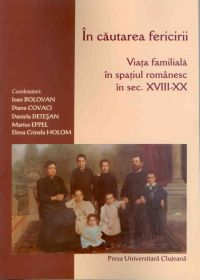Populație și structură socială în Granița Militară (Militärgrenze) austriacă.O supraviețuire traversând istoria: grupul domestic extins din zona Grani
Population and social structure in the Austrian Militarz Border. The house communion from Năsăud border.
Author(s): Gheorghe SişeşteanSubject(s): History
Published by: Centrul de Studiere a Populaţiei
Keywords: Military Border (Militärgrenze); house communion; juridical regulations; military and social obligations; territory organization
Summary/Abstract: In the 18th century, the Habsburg Empire would organize in the southern and eastern part of the Military Border (Militärgrenze), a special territorial structure, with military purpose, independent of any local authority, the border population being subordinated to the military authorities and to the emperor. This border band contained extremely diverse populations both ethnically (Croatian, Serbian, Swabish German, Szekler Hungarian, Romanian) and confessionally (roman-catholic, greekcatholic and orthodox). In this study, I present some social mutation that made this region a true laboratory for the social experiments of modernization. I do insist on organizing the household and within it, on the extended domestic group, on the house communion (hauskommunion), and on the Romanian border population (Banat and Transylvania). The logics behind the social organization in the Military Border, especially the household organization based on house communion, have maintained for a long time, passing through history and reaching the end of the 20th century in forms less and less statistically representative.
Journal: Romanian Journal of Population Studies
- Issue Year: 4/2010
- Issue No: Supplement
- Page Range: 275-292
- Page Count: 17
- Language: Romanian
- Content File-PDF

